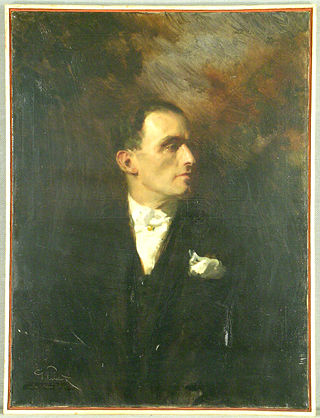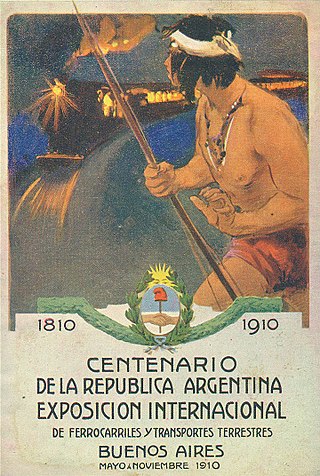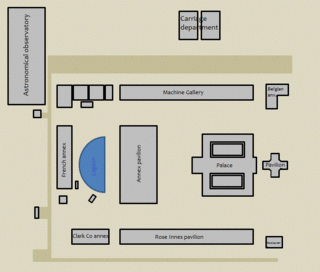
A world's fair, also known as a universal exhibition or an expo, is a large international exhibition designed to showcase the achievements of nations. These exhibitions vary in character and are held in different parts of the world at a specific site for a period of time, typically between three and six months.

The Ibero-American Exposition of 1929 was a world's fair held in Seville, Spain, from 9 May 1929 until 21 June 1930. Countries in attendance of the exposition included: Portugal, the United States, Brazil, Uruguay, Mexico, Peru, Argentina, Chile, the Republic of Colombia, Cuba, Venezuela, the Dominican Republic, Bolivia, Panama, El Salvador, Costa Rica, and Ecuador. Each Spanish region and each of the provinces of Andalusia were also represented. Spain’s Dictator General Miguel Primo de Rivera gave the opening address. Primo de Rivera allowed the Spanish King Alfonso XIII to give the final words and officially open the exposition. The purpose of the exposition was to improve relations between Spain and the countries in attendance, all of which have historical ties with Spain through colonization or political union. Other countries were represented at the International section in Barcelona.

The Palacio de Bellas Artes is a prominent cultural center in Mexico City. It has hosted notable events in music, dance, theatre, opera and literature in Mexico and has held important exhibitions of painting, sculpture and photography. Consequently, the Palacio de Bellas Artes has been called the "Cathedral of Art in Mexico". The building is located on the western side of the historic center of Mexico City next to the Alameda Central park.

The Seville Expo '92 was a universal exposition that took place from Monday, April 20 to Monday, October 12, 1992, on La Isla de La Cartuja, Seville, Spain. The theme for the expo was "The Age of Discovery", celebrating the 500th anniversary of Christopher Columbus reaching the Americas after launching from Seville's port, and over 100 countries were represented. The total amount of land used for the expo was 215 hectares and the total number of visitors was 41,814,571. The exposition ran at the same time as the smaller and shorter-duration Genoa Expo '92, a Specialized Exhibition, held in memory of Christopher Columbus, born in Genoa.
Neo-Mudéjar is a type of Moorish Revival architecture practised in the Iberian Peninsula and to a far lesser extent in Ibero-America. This architectural movement emerged as a revival of Mudéjar style. It was an architectural trend of the late 19th and early 20th centuries that began in Madrid and Barcelona and quickly spread to other regions in Spain and Portugal. It used Mudéjar style elements such as the horseshoe arch, arabesque tiling, and abstract shaped brick ornamentations for the façades of modern buildings.

Mario Palanti was an Italian architect who designed important buildings in the capital cities of both Argentina and Uruguay.

The Exposición Internacional del Centenario was an exhibition held between May and November 1910 in Buenos Aires, to commemorate the Centennial of the May Revolution in Argentina. With a population of around 1.2 million, Buenos Aires was then the largest urban complex in Latin America, the eighth city in the world, and one of the richest. As the capital city and main port of the young Argentine Republic at the height of its economic expansion, the city was growing rapidly with the successive waves of European immigration.

The Palacio de la Exposición is a building on Colon Avenue in downtown Lima, Peru. It was constructed in the 19th century with the Park of the Exposition to house the International Exposition of Lima in 1872. Since 1957, it has been home to the Lima Art Museum.

The 1929 Barcelona International Exposition (also 1929 Barcelona Universal Exposition, or Expo 1929, officially in Spanish: Exposición Internacional de Barcelona 1929 was the second World Fair to be held in Barcelona, the first one being in 1888. It took place from 20 May 1929 to 15 January 1930 in Barcelona, Spain. It was held on Montjuïc, the hill overlooking the harbor, southwest of the city center, and covered an area of 118 hectares at an estimated cost of 130 million pesetas. Twenty European nations participated in the fair, including Germany, Britain, Belgium, Denmark, France, Hungary, Italy, Norway, Romania and Switzerland. In addition, private organizations from the United States and Japan participated. Hispanic American countries as well as Brazil, Portugal and the United States were represented in the Ibero-American section in Sevilla.

The Park of the Exposition is a park located in the Santa Beatriz neighborhood of downtown Lima, capital of Peru.

The Exposición Nacional de Minería, Artes Metalúrgicas, Cerámica, Cristalería y Aguas Minerales was an exhibition held in Madrid, Spain in 1883. Situated in the Parque del Buen Retiro between May and November, it was presided over by King Alfonso XII of Spain and his wife Queen Maria Christina of Austria. Several countries participated.

Ricardo Velázquez Bosco (1843–1923) was a Spanish architect, archaeologist and scholar.

The Chilean International Exhibition was a world's fair held in Quinta Normal Park, Santiago, between 16 September 1875 and 16 January 1876 to show Chilean people recent technological and scientific advances.

Aníbal González Álvarez-Ossorio was a Spanish architect who made important buildings in Seville and Madrid. He designed the Plaza de España and he was the chief architect of the Ibero-American Exposition of 1929 in Seville.

The Lima Art Museum is an art museum in Lima, Peru. The museum is located in the Palacio de la Exposición. The museum was inaugurated in 1961. The collection includes ceramics and textiles. MALI is a private organization supported by admission fees, contributions from members, and private donations.

Luis Lacasa Navarro was a Spanish architect. His work in Spain and Paris before and during the Spanish Civil War (1936–39) was rationalist and functional. He is best known as co-designer of the Spanish Pavilion at the 1937 Paris Exposition, a work designed to showcase the modern legitimacy of the embattled Spanish Republic. After the war he went into exile in the Soviet Union.

The National Ecuadorian Exposition was a world's fair held in Quito in 1909 to mark 100 years since the start of the campaign for Ecuadorian independence from Spain.

The Great Clock of Lima, also known as the Pedro Ruiz Gallo clock after its inventor, was a monumental clock created by Pedro Ruiz Gallo, and which was installed in the Parque de la Exposición in 1870 for the celebration of the Exhibition of 1872. The watch disappeared during the occupation of Lima by the Chilean Army in the War of the Pacific.




















